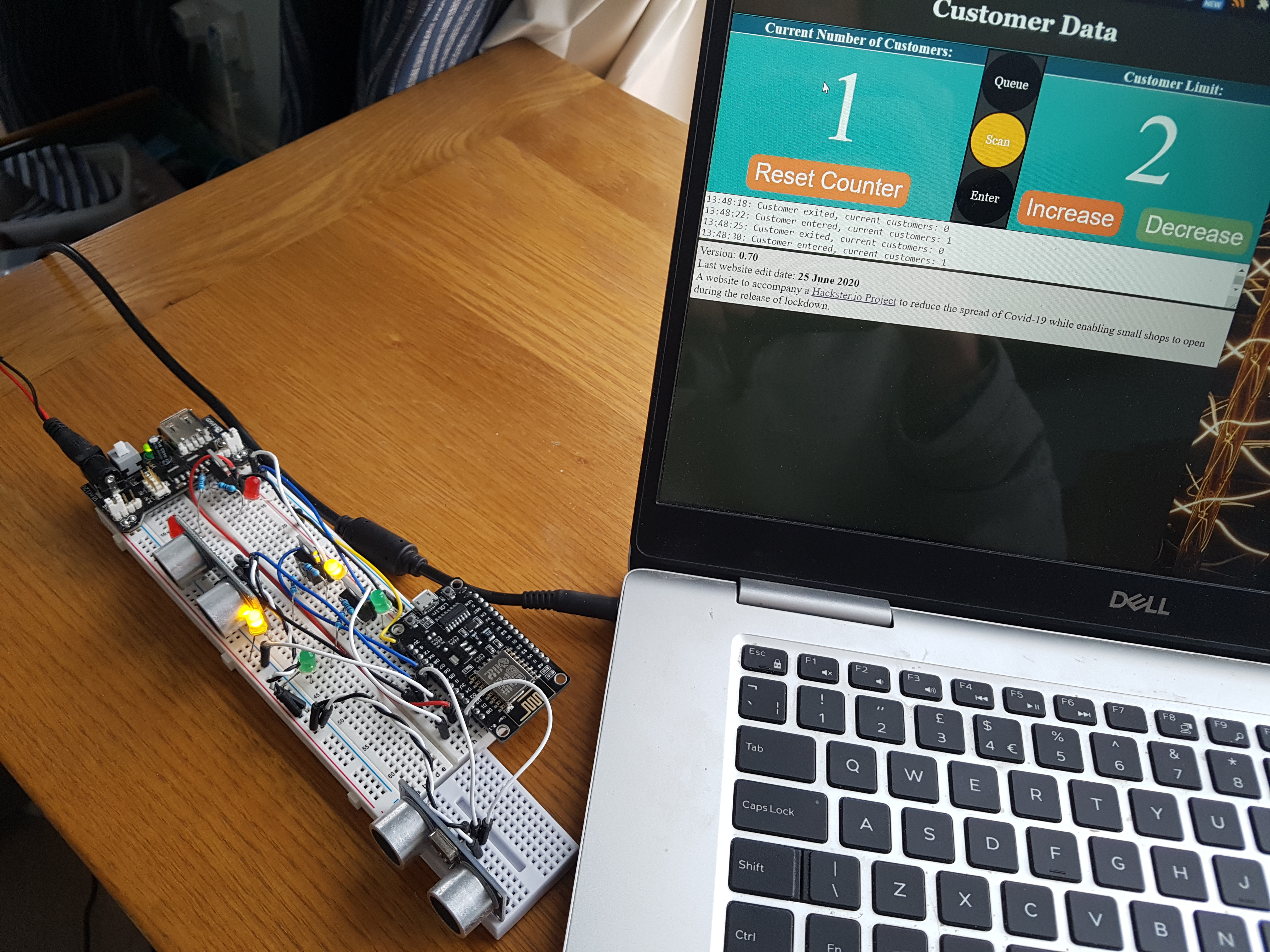COVID-19 Open-Source Innovation: Esp8266 Shop Door Assistant
The COVID-19 Detect and Protect Challenge is crowdsourcing open-source hardware innovations to tackle the disease. Every one of the 300+ innovations submitted is made freely available, with all instructions needed for others to build them. Here, we talk to Grand Prize Winner Harry Anderson-Chapman behind Esp8266 Shop Door Assistant.
Tell us about your solution. How does it address a specific need around COVID-19 response/recovery?
The aim of my traffic light solution is to ensure social distancing in the recovery phase of COVID-19. it could be implemented either by the shop owners to limit customers within their stores at one time or even by local officials to limit the pedestrian traffic through a particular street. The former should be considered by independent stores on wide streets, while the latter would suit narrow streets where individual store use may have a reduced overall effect.
Closing public-dense locations was initially the only preventative measure to gain control over the spreading virus, but this short-term measure had such a hard impact on businesses that it couldn’t be implemented for long.
The device looks like a standard traffic light but with two ultrasonic sensors on the side. The shop owner sets a limit to the number of customers using a webpage and the device counts the number of people scanning in and out using the sensors. The amber light means the limit has not been reached and someone can scan to enter. The green light is displayed once someone has scanned their entry. The red light displays when the limit is reached, and the customers will need to queue outside until someone leaves the controlled area. The webpage shows how many people are in the shop and matches what the traffic light is doing. The operation is simple, but my concern is that it relies heavily on trusting customers to use it properly!
What was the inspiration behind the project?
In the UK, large chains of stores implemented distancing measures by placing staff members at doors to limit the number of customers entering. However, in all cities around the globe you get narrow side streets laden with small independent stores, services and eateries with one or two staff members working inside and so they don’t have the resources to ensure social distancing. I hope this device can be used in locations which struggle to implement distancing measures, to protect the staff working in the stores and the customers.
I believe the main reason is adaptability. I entered this competition as a student simply looking to learn something by designing for a brief. The solution I came up with was built using parts I already had and for sure isn’t the optimum solution. Being open-source enables transparency about the project. Someone with more experience can improve the project by designing a circuit board with fewer parts, building a 3D printable case or by squashing bugs in the code. I would learn from their input too. When someone wants to then make the project, they can adapt it to how they want to use it and using parts which are available to them - say by swapping out mains power for battery power or choosing a different microcontroller.
Furthermore, seeing the other open-source entries, there are possibilities to combine projects. For example, you could ensure that customers had sanitised their hands and are wearing face masks before the green light displays and they may enter the location.
What impact do you hope to achieve with this project?
I would love to see it in action, testing to see how much of an effect it can have. Currently, the project is in a very early stage. I hope to use some of the funds from the prize to improve on it – designing a PCB, case and creating a much more comprehensive tutorial such that anyone can create it. Project Theia really set the standard for how a finished project with an easy to follow tutorial should be, so I will be looking to their project layout when improving upon mine.
What is one solution in the #COVID19DetectProtect challenge that you wish you'd built?
I was incredibly impressed by some of the other projects, especially the Digital Stethoscope by Team MixPose. I can see the effect it can have in locations where there is a lack of medical expertise, especially in rural areas far from hospitals. Telemedicine is just one example of the potential for quality of life improvements which comes from providing internet access everywhere in the world.
To follow from this, I wish I’d created a device which made healthcare more accessible. Eivind Holt’s project of the long-range health monitoring kit is another superb example of this.
About Harry Anderson-Chapman: At 20 years old, Harry Anderson-Chapman has just completed my second year of study at The University of Bath in the UK studying Integrated Mechanical and Electrical Engineering. As a STEM ambassador, he enjoys helping with science clubs in Bath. He is a keen runner and reader and is currently looking for an electrical engineering placement to begin in July 2021.

 Locations
Locations